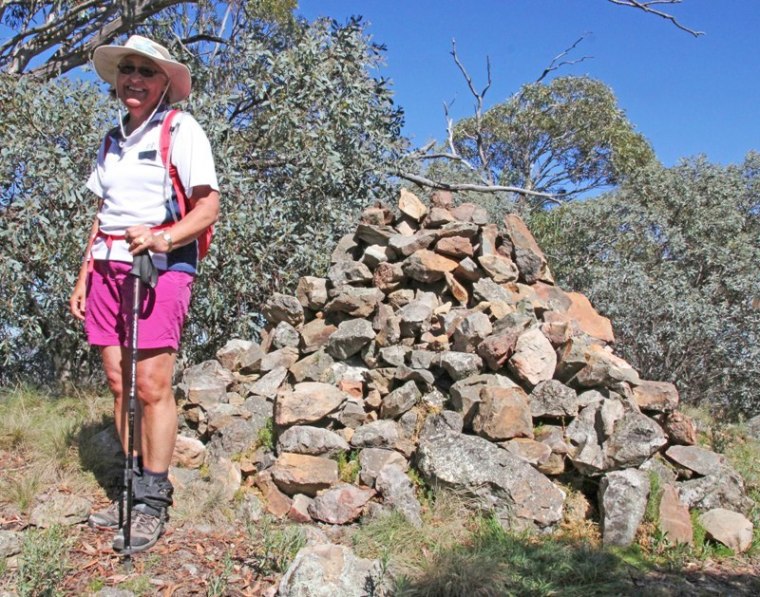
In the absence of regular appointments and things to do each week, we have amazing opportunities to spend time outdoors. I am blessed by living in a suburb with a long hill at the back, as part of Canberra Nature Park.
When Canberra was being planned, the powers that be decreed that there shall be no structures built above a certain elevation, so that means there are a lot of hills around with a Nature Park on them instead of houses.
Benefits of bushwalking
I have written before about the benefits of walking in the bush, of nature play for kids, and just being out in the open air.
Exercise: yes you can go to the gym and build muscle tone and endurance, but repetition can be so boring. If you’re bush walking, you can choose to walk on flat ground, or climb a steep hill or exercise your agility by crossing a creek. The variety can be endless and very stimulating. And you can choose how long to walk for.
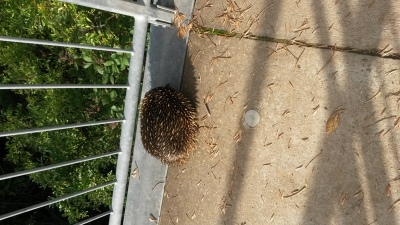
Exploration: you don’t have to go the same way each time. Challenge yourself to walk on a track you haven’t been on before, just to see where it goes. You might learn something amazing.
Ecology: how many different plants did you notice this time? When do they flower? Stop and listen to the birds in that tree – can you see them, can you tell what they are? Are there animal tracks that indicate there are more than just kangaroos that frequent this area?
Notice the poo on the ground – can you tell the difference between kangaroo scats, wombat scats and rabbit scats? That will give you an idea of which creatures share your part of the bush. You might also see possum or fox scats, to enlarge the picture.
Stop by a pond and listen to the frogs. Can you tell if there are different species? How many different varieties of reeds are there, and how many water birds use the pond? Frogs and macroinvertebrates can be good indicators of the health of a waterway – they are very sensitive to chemicals and other pollutants.
Wildlife
Sometimes you come across wildlife without even trying! This echidna was crossing a small bridge just before we were about to cross it. It was very shy – couldn’t burrow into the surface but froze instead and hid its snout. After it crossed it vanished into some well formed tunnels in the grass – obviously its familiar territory.
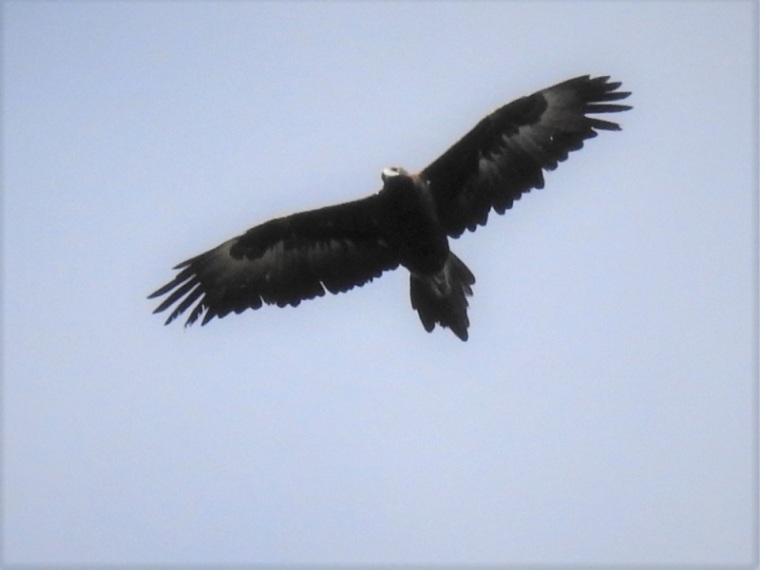
There are quite a few areas around Canberra where you can see these magnificent eagles. There are other birds a plenty – magpies, cockatoos, corellas, blue wrens, red breasted robins…. You just have to keep an eye out and sometimes be still for a while.
Destruction and regeneration
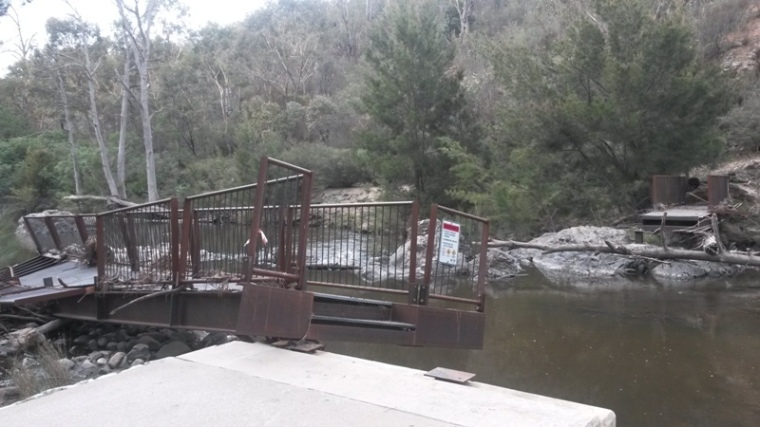
The Cotter River near Canberra has a pretty spectacular dam which was extended and finished by 2013 in response to growing demands in the area during periods of drought. Water is usually released to keep the river flowing and maintain riparian life.
The bridge shown in the picture was constructed to cross at a campground, and the track leads to some caves and an old mine site. After the drought and horrendously high temperatures this summer, there was rain – the river flooded and this bridge (built of metal with sides that should drop when the water volume is such that it goes over the bridge) couldn’t withstand the ferocity of this flood.
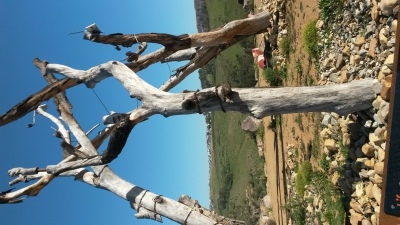
Some wonderful efforts have been made along some of our river corridors to restore the natural vegetation and fauna. A large yellow box tree was removed from a Canberra suburb because it had died and was proving to be a danger in the street. It was placed in the river corridor and bolstered with wire and cement to provide nesting hollows and refuges for birds and other wildlife.
Gorgeous gorges
The Murrumbidgee River reaches from near Tharwa to the south of Canberra to Uriarra Crossing to the north, some 50 odd kilometres. Most of that length has tracks that you can walk either short bits or longer to suit your level of fitness and desire.
One of the stunning areas is the Red Rocks Gorge, frequented by rock climbers, bird watchers, canoeists and other recreationers. In some years there has been a peregrine falcon nest high up on the rocks, defined by the white streaks of guano. You need binoculars or a good camera to see the birds and can occasionally glimpse the chicks. I have also seen tawny frogmouths nesting in one of the trees along the track – they do an incredible job of looking just like a tree trunk.
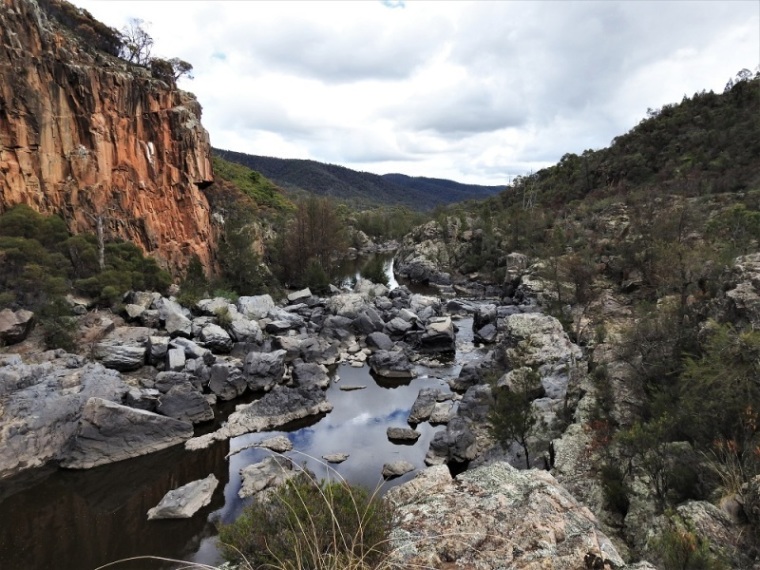
So – take advantage of the crisp sunny autumn days and find some tracks you haven’t walked before. Don’t waste this isolation – use it! Just go for a walk!

Aira Chilcott is a retired secondary school teacher with lots of science andtheology under her belt. Aira is an editor for PSI and indulges inreading, bushwalking and volunteering at a nature reserve. Aira’s husband Bill passed away in 2022 and she is left with three wonderful adult sons and one grandson.
Aira Chilcott's previous articles may be viewed at http://www.pressserviceinternational.org/aira-chilcott.html